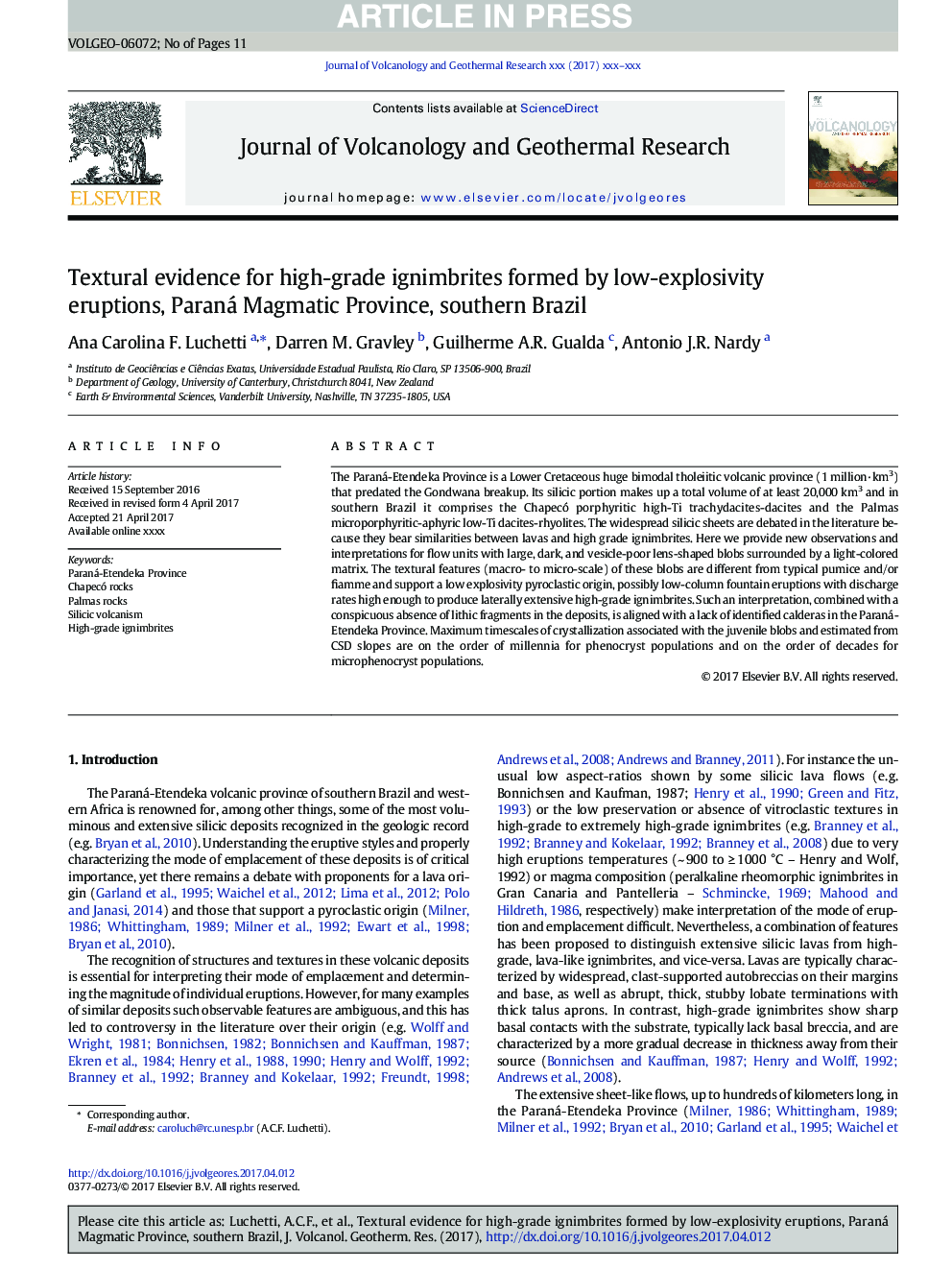| Article ID | Journal | Published Year | Pages | File Type |
|---|---|---|---|---|
| 8911338 | Journal of Volcanology and Geothermal Research | 2018 | 11 Pages |
Abstract
The Paraná-Etendeka Province is a Lower Cretaceous huge bimodal tholeiitic volcanic province (1 million·km3) that predated the Gondwana breakup. Its silicic portion makes up a total volume of at least 20,000 km3 and in southern Brazil it comprises the Chapecó porphyritic high-Ti trachydacites-dacites and the Palmas microporphyritic-aphyric low-Ti dacites-rhyolites. The widespread silicic sheets are debated in the literature because they bear similarities between lavas and high grade ignimbrites. Here we provide new observations and interpretations for flow units with large, dark, and vesicle-poor lens-shaped blobs surrounded by a light-colored matrix. The textural features (macro- to micro-scale) of these blobs are different from typical pumice and/or fiamme and support a low explosivity pyroclastic origin, possibly low-column fountain eruptions with discharge rates high enough to produce laterally extensive high-grade ignimbrites. Such an interpretation, combined with a conspicuous absence of lithic fragments in the deposits, is aligned with a lack of identified calderas in the Paraná-Etendeka Province. Maximum timescales of crystallization associated with the juvenile blobs and estimated from CSD slopes are on the order of millennia for phenocryst populations and on the order of decades for microphenocryst populations.
Keywords
Related Topics
Physical Sciences and Engineering
Earth and Planetary Sciences
Geochemistry and Petrology
Authors
Ana Carolina F. Luchetti, Darren M. Gravley, Guilherme A.R. Gualda, Antonio J.R. Nardy,
